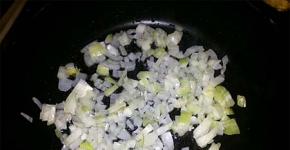Dog constipation - what to do? Dog constipation - what to do?
Full or partial stool retention is always an alarming sign that can lead to a rupture of the intestine, intoxication, serious damage to internal organs and even the death of a pet! Of course, not all cases are so scary. But the owner must know what caused the dog constipation, what to do in such a situation and how to avoid problems with defecation in the future.
To notice problems in time, notice how often your pet goes to the toilet. Puppies empty their intestines up to five times a day, because their metabolism is accelerated. Aging pets are less likely to cocoa, because metabolism slowed down - every 2-3 days. Adult dogs are emptied once a day, giant breeds - once every two days. The chair should resemble a sausage, smooth and shiny, of the same consistency and evenly colored.
Causes and Effects
1. In order for fecal masses to move through the intestines, sufficient peristalsis is necessary (wavy contractions pushing the contents). The intestine can "get up" for various reasons - diseases of internal organs and neurological disorders, infections, obesity or exhaustion, low activity, diabetes. In such cases, signs of constipation in dogs are expressed by constipation - the pet often takes a long time, but the output is clearly less than usual, feces come out with rounds or flakes, the pet whines.
Anesthesia almost always leads to a decrease in peristalsis due to the relaxing effect of the drug on the muscles. To avoid problems, veterinarians recommend a postoperative diet (light meals in small portions in the form of mucous cereals, soups) and mild laxatives. It is important to comply with all appointments, as constipation after surgery can cause seam divergence, severe pain. Difficulties with defecation are possible due to the formation of adhesions during abdominal operations.

2. For normal bowel movement, sufficient volume and a certain moisture content in the stool is necessary. If the stool is too much, they simply will not be able to pass through the intestines and will accumulate inside. The same happens if the feces are very dry. For example, constipation in a dog after bones occurs precisely for these reasons - dry bones literally clog the intestines.
To avoid problems, pet need to properly feed and monitor the amount of fluid consumed. Low-drinking dogs recommend a semi-fluid menu. Dry food, contrary to general opinion, does not provoke constipation in dogs, because in a healthy stomach, the granules quickly turn into porridge. But for diseases of the digestive tract, dry food can cause constipation.
3. With obstruction (from “obstruction”), the dog’s symptoms are quite severe - weakness, painful and hard stomach, thirst and poor appetite. A favorite is very hard, but there is no chair. Sometimes vomiting develops, mucous membranes turn pale. If the condition lasts longer than 3 days - increases intoxication (feces poison the body).

The cause of obstruction can be fecal masses (prolonged constipation leads to drying of the contents and the formation of stones), a foreign body (toy, bone), a tumor, a large number of worms. In such a situation, the treatment of constipation with improvised means threatens the life of a pet! Enemas, laxatives, and other drugs increase peristalsis and increase the volume of the masses, but the intestinal lumen is closed - the feces press on the intestinal walls, which leads to damage to the mucous membranes and, eventually, to rupture.
First aid
Pondering how to help a dog with constipation, owners often rely on laxatives from a human medicine kit. As mentioned above, in some cases this can seriously aggravate the problem, therefore, any pills and mixtures - only after a visit to the veterinarian.
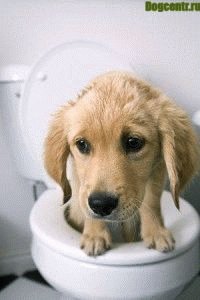
If you can not immediately contact a doctor, you can try to solve the problem yourself:
1. We exclude from the menu muscular meat, meat broths, rice and corn, cheese, eggs, yesterday’s sour milk. We feed in small portions, the food is warm and semi-liquid (well boiled buckwheat in milk or water, stewed vegetable stews from cabbage, carrots and zucchini). You can a little boiled sea fish, better than white. We treat the dog with fresh kefir or yoghurt (without additives, dyes), raw beets. If there is no allergy, you can give a couple of plums. You can temporarily switch to canned food for puppies or chronically sick dogs (easily digestible diet).
2. From the fact that you can give a dog from constipation, without fear of complications, you should choose one thing (or / or, and not shove everything). It helps sour milk, cabbage juice (can cause flatulence), weak buckthorn decoction, infusion on pumpkin seeds (a spoonful of seeds and half a cup of boiling water, 30 minutes in the heat). You can chop flaxseed and mix with vegetable oil or buy flaxseed oil. Large dogs for a tablespoon 2p / day, small - for tea. Sour milk instead of breakfast.
3. In many cases, a Vaseline Enema perfectly helps the dog. For constipation, slightly warm oil is introduced into the rectum slowly, effortlessly. If the oil does not go, it is impossible to continue (perhaps there is an obstruction, and in this case any pressure is dangerous). For reasons of pet hygiene you need to put in the bathroom or in a basin. Volumes sparing (glass for a very large dog, half a cup for a pet weighing 20 kg, a pair of spoons for a miniature toy). Without experience, we strongly recommend that you entrust this procedure to a specialist.

4. Before treating constipation with enema, try to give vaseline oil inside. Also warm (not lower than room temperature) and in small portions, from a syringe without a needle to the pet's cheek. Miniature dogs - a teaspoon, the middle - dining, large - two spoons at a time. Twice a day or until effect is achieved. Vaseline oil is not absorbed, is not absorbed, therefore, with a slight excess of the dosage, nothing will happen - the surplus will be released naturally. Remove the carpet, cover the furniture - the oil will drip from the priests and soil everything around.
5. Walk with a dog more often, 3-5 times a day. Pedestrian use is the best treatment for constipation if the condition is not complicated by chronic disease. Walking awakens the intestines, forcing it to work.
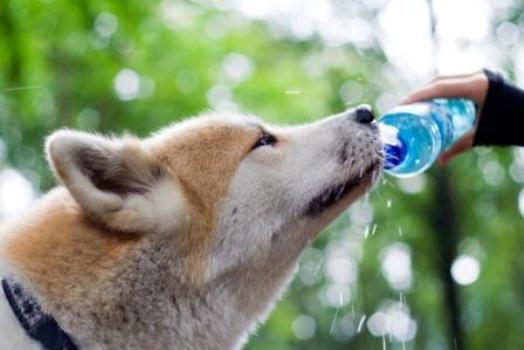
In this mode, you need to hold out for two days. If there is no effect, be sure to consult a doctor. If the dog has other (any!) Symptoms of indisposition, show your pet to the veterinarian immediately. Remember that constipation can be a sign of a serious illness, bloat or obstruction, and in these cases, the delay can lead to the most sad outcome. Whenever possible, do not pull a visit to the vet.
Vomiting in dogs
Vomiting is the active process of erupting the contents of the stomach out. First, nausea occurs, possibly drooling, then anti-peristaltic contractions begin in the stomach, while the abdominal muscles and diaphragm tighten. Vomiting occurs.
The dog has constipation - what to do
Symptoms
Koprostasis
Treatment
In the life of each dog, a situation may occur where a bowel movement will take place in an extremely difficult condition, it is possible that it may be absent. It is at such moments that they say - the dog has constipation - what to do, many do not even imagine. As a result of such unpleasant difficulties, an accumulation of fecal masses occurs in the colon and their subsequent solidification. In addition, the presence of sharp objects, for example, bone fragments, is not excluded in these masses. When defecating these items will cause damage to the intestinal wall.
Especially this disease is typical for older individuals, or leading a sedentary divan lifestyle. A strong constipation in a dog can be caused by a number of reasons:
Feeding bones;
Feeding steep broth;
Overfeeding;
Incorrect feeding dry food.
The most dangerous manifestations of constipation, which is a consequence of the presence and development of diseases:
Prostate;
Paraanal glands;
The liver;
The kidneys;
Anus and intestines;
Neurological;
Orthopedic.
Elimination of the causes can be achieved by reviewing the diet and building it properly, for example, if you have constipation in a dog after bones, cure diseases, and fully monitor the processes of feeding and urination of the animal. It is very important for the slightest manifestation of difficulties with defecation contact a veterinarian. Only a complete examination can reveal the cause, and the doctor can make an accurate diagnosis and indicate how to treat the dog for constipation.
Symptoms
A healthy dog with a healthy intestine and stomach empties its intestines twice a day. If this procedure occurs once a day or does not occur at all, then you should be worried about the pet's health, as this symbolizes constipation. However, immediately to panic is not recommended - you should pay attention to the behavior of the pet.
The manifestation of constipation is characterized by the attachment of a dog of considerable effort to release the intestines, unsuccessful attempts and pain syndrome as a result of these actions. In addition, a dog may try to go to the toilet several times during the day, but all these attempts will not be successful. This condition may take several days. No wonder that many people are very worried about the state of their beloved friend, but they have no idea how to cure constipation in a dog.
Koprostasis
Improper feeding of a pet can lead to the development of a disease such as coprostasis. It may occur as a result of feeding the dog with bones or eating large portions. It is worth noting that the dog constipation from the bones occurs very often. Among other things, such a disease pursues males suffering from an enlarged prostate gland. The last factor is directly related to the formation of constipation, because as a result of an increase there is a squeezing of the intestines, and, of course, feces can not go outside.
Another cause of difficulty excretion of feces is the presence of damage to the pelvic region, since this factor greatly affects the condition of the intestines. In such cases, pets simply need to take laxatives. Dogs suffering from coprostasis are fairly easy to identify, as they are always restless, periodically run around emptying, but this does not work for them. Among other things, the stomach of such dogs is always in a somewhat swollen state.
With suspicion of the disease dogs must be given to the hospital for x-ray studies with contrasting intestinal area. Mild conditions can be cured by the simplest methods, for example, using antispasmodic agents.
Do dog constipation treatment
Another effective cure is a combination of petroleum jelly and castor oil. Of course, severe cases require surgery. Thus, an enema for a dog with constipation is carried out under general anesthesia, and the procedure is supplemented by the removal of feces through obstetric forceps. In order to avoid complications of the existing situation, in no case is it allowed to feed the dog when the intestines are overfilled.
To quickly get rid of pet constipation can only help her master. First of all, do not feed the dog with chicken bones and other small sizes. Such bones can split, which will bring a pet a little pleasant. Large bones are recommended to give the dog raw, it is not allowed to cook them. What to give a dog from constipation? It is important to remember that in this state the dog must follow a strict diet. The diet should be built primarily on vegetables - celery and pumpkin. Good effect is not processed bran.
A diet built on raw vegetables helps improve intestinal motility in the dog. The most useful among them are carrot juice, always fresh, and beets. However, not always dieting will get rid of the unpleasant disease. In this case, it is worth moving to the use of additional laxatives, such as vegetable oil. White magnesium has the same property. The first tool should not be used more often 2 times a week, while the second can be used more often. Moreover, the dose should be an eye of 1-1.5 tsp.
Quite often, vaseline oil is prescribed to a dog with constipation and a rather unpleasant procedure of washing out the intestines with the help of a water enema. In the latter case, it is recommended to use water cooled to 30 degrees but not boiled. A small breed dog is quite suitable for washing a rubber syringe, when representatives of large breeds will need an Esmarkh mug. This element must be in limbo, and the height must be up to 1 meter.
Dog postoperative constipation
In dogs, constipation after surgery may occur quite often. It is possible that after undergoing surgery the dog’s intestine may well begin to suffer from obstruction. Most importantly, eliminate this side effect. If the veterinarian was diagnosed with obstruction, the dog will again have to do another operation. An enema containing a cooled sterile solution is given to dogs after surgery, if bowel obstruction has been avoided.
Sometimes no means in the postoperative period can help the dog, and veterinarians resort to the use of various laxative drugs - from folk (oils) to medication. Often it is necessary to use antispasmodics. Here, the most popular use of no-shpy and novocaine, is not excluded and baralgin. Further elimination of the symptoms of constipation is achieved by a three-day application of suppositories and concomitant medications that help keep the intestinal microflora in a normal state.
Proper postoperative feeding
Of course, the diet after each specific operation should be prescribed exclusively by the veterinarian, however, there are general rules under which vomiting and constipation in a dog should not manifest. First of all, the dog should not be fed or fed during the hours set by the veterinarian after the operation. When the allotted time passes, do not think that the dog will immediately appetite - this will not happen. It is very important that the portions of food were small, but they should be given quite often.
Do not give to eat heavy food, hard and dry. Meals should be based on light foods, preferably a liquid state. If the dog previously fed on dry food, it should be softened slightly with water. However, it is much better to replace this feed with wet canned food, which can be found in a special dietary type. Such a diet should last about a month, only after this pet can gradually be returned to a normal diet.
With a normal diet, it is worth starting a postoperative pet bait with a weak broth. Then you can begin to give a taste of kefir and cereal in a very liquefied state. It would be nice to add wet stuffing in them. Most importantly, the dog must be constantly open access to clean drinking water, regardless of the choice of food.
Constipation in dogs is difficult or no bowel movement for several days. At the same time in the large intestine fecal masses harden and accumulate. Sometimes foreign inclusions (fragments of bones) are observed in them and painful sensations occur during bowel movements.
Constipation is not uncommon in dogs, especially in the sedentary and the elderly.
Causes of constipation in dogs
The first such reason is improper feeding of the animal: feeding the bones, especially tubular chicken or boiled, as well as other items with questionable digestibility. As well as dietary errors, such as
feeding steep broth,
a large amount of hard to digestible fiber,
animal overfeeding
Often constipation occurs when feeding with dry food, if it does not fit the pet. Also, constipation in dogs is the result of various diseases of internal organs:
liver and kidneys, intestines, pancreas, perineum, rectum, anus
neurological and orthopedic problems
diseases of paraanal glands
Prostate diseases in dogs.
In order to establish the cause of constipation in a dog, you need to look at the change in appetite and thirst, the presence of vomiting and urination features. Take into account the need and diet, and the age of the animal.
Dog constipation: what to do? Already in the process of examination by a doctor, a diagnosis can be made, since even without special examinations and tests, diseases of the rectum, perineum, para-anal glands, the presence of foreign bodies in the digestive system, orthopedic or neurological problems that can interfere with the normal defecation act can be identified.
Additionally, for the diagnosis, an x-ray study of the abdominal cavity, blood tests are used, if necessary, an x-ray with a contrast agent (barium sulfate), which allows to evaluate the intestinal permeability and ultrasound of the abdominal cavity.
Treating constipation in dogs What if a dog is constipated? How to treat?
As a therapy, primarily means are used that can soften fecal masses: liquid paraffin or lactulose preparations (Lactusan, Duphalac, and the like).
The best therapeutic and prophylactic remedy for constipation in dogs has always been enemas. They are able to release the intestines from a large number of hardened fecal masses. And if there are a lot of bone fragments in the intestines, then often under general anesthesia their mechanical removal is required.
If, in addition to constipation, an animal is vomiting, a dog does not eat for a few days, then infusion therapy (dropper) is necessary, which saves the body from dehydration.
In more severe cases, veterinarians resort to surgical removal of part of the large intestine along with its contents.
If the dog, especially the elderly, has a tendency to constipation, then you need to engage in prevention (add greens and kefir to the diet) and never give bones.
Full or partial stool retention is always an alarming sign that can lead to a rupture of the intestine, intoxication, serious damage to internal organs and even the death of a pet! Of course, not all cases are so scary. But the owner must know what caused the dog constipation, what to do in such a situation and how to avoid problems with defecation in the future.
To notice problems in time, notice how often your pet goes to the toilet. Puppies empty their intestines up to five times a day, because their metabolism is accelerated. Aging pets are less likely to cocoa, because metabolism slowed down - every 2-3 days. Adult dogs are emptied once a day, giant breeds - once every two days.
The chair should resemble a sausage, smooth and shiny, of the same consistency and evenly colored. Causes and effects 1. For fecal masses to move through the intestines, sufficient peristalsis is necessary (wave-like contractions pushing the contents). The intestine can "get up" for various reasons - diseases of internal organs and neurological disorders, infections, obesity or exhaustion, low activity, diabetes. In such cases, signs of constipation in dogs are expressed by constipation - the pet often takes a long time, but the output is clearly less than usual, feces come out with rounds or flakes, the pet whines. Anesthesia almost always leads to a decrease in peristalsis due to the relaxing effect of the drug on the muscles.
To avoid problems, veterinarians recommend a postoperative diet (light meals in small portions in the form of mucous cereals, soups) and mild laxatives. It is important to comply with all appointments, as constipation after surgery can cause seams, hernia, severe pain. Difficulties with defecation are possible due to the formation of adhesions during abdominal operations.
2. For normal bowel movement, sufficient volume and a certain moisture content in the stool is necessary. If the stool is too much, they simply will not be able to pass through the intestines and will accumulate inside. The same happens if the feces are very dry. For example, constipation in a dog after bones occurs precisely for these reasons - dry bones literally clog the intestines. To avoid problems, pet need to properly feed and monitor the amount of fluid consumed. Low-drinking dogs recommend a semi-fluid menu. Dry food, contrary to general opinion, does not provoke constipation in dogs, because in a healthy stomach, the granules quickly turn into porridge. But for diseases of the digestive tract, dry food can cause constipation.
3. With obstruction (from “obstruction”), the dog’s symptoms are quite severe - weakness, painful and hard stomach, thirst and poor appetite. A favorite is very hard, but there is no chair. Sometimes vomiting develops, mucous membranes turn pale. If the condition lasts longer than 3 days - increases intoxication (feces poison the body). The cause of obstruction can be fecal masses (prolonged constipation leads to drying of the contents and the formation of stones), a foreign body (toy, bone), an inversion of the bowel loop, a tumor, a large number of worms. In such a situation, the treatment of constipation with improvised means threatens the life of a pet! Enemas, laxatives, and other drugs increase peristalsis and increase the volume of the masses, but the intestinal lumen is closed - the feces press on the intestinal walls, which leads to damage to the mucous membranes and, eventually, to rupture.
First aid
Pondering how to help a dog with constipation, owners often rely on laxatives from a human medicine kit. As mentioned above, in some cases this can seriously aggravate the problem, therefore, any pills and mixtures - only after a visit to the veterinarian. If you can not immediately contact a doctor, you can try to solve the problem yourself:
1. We exclude from the menu muscular meat, meat broths, rice and corn, cheese, eggs, yesterday’s sour milk. We feed in small portions, the food is warm and semi-liquid (well boiled buckwheat in milk or water, stewed vegetable stews from cabbage, carrots and zucchini). You can a little boiled sea fish, better than white. We treat the dog with fresh kefir or yoghurt (without additives, dyes), raw beets. If there is no allergy, you can give a couple of plums. You can temporarily switch to canned food for puppies or chronically sick dogs (easily digestible diet).
2. From the fact that you can give a dog from constipation, without fear of complications, you should choose one thing (or / or, and not shove everything). It helps sour milk, cabbage juice (can cause flatulence), weak buckthorn decoction, infusion on pumpkin seeds (a spoonful of seeds and half a cup of boiling water, 30 minutes in the heat). You can chop flaxseed and mix with vegetable oil or buy flaxseed oil. Large dogs for a tablespoon 2p / day, small - for tea. Sour milk instead of breakfast.
3. In many cases, a Vaseline Enema perfectly helps the dog. For constipation, slightly warm oil is introduced into the rectum slowly, effortlessly. If the oil does not go, it is impossible to continue (perhaps there is an obstruction, and in this case any pressure is dangerous). For reasons of pet hygiene you need to put in the bathroom or in a basin. Volumes sparing (glass for a very large dog, half a cup for a pet weighing 20 kg, a pair of spoons for a miniature toy). Without experience, we strongly recommend that you entrust this procedure to a specialist.
4. Before treating constipation with enema, try to give vaseline oil inside. Also warm (not lower than room temperature) and in small portions, from a syringe without a needle to the pet's cheek. Miniature dogs - a teaspoon, the middle - dining, large - two spoons at a time. Twice a day or until effect is achieved. Vaseline oil is not absorbed, is not absorbed, therefore, with a slight excess of the dosage, nothing will happen - the surplus will be released naturally. Remove the carpet, cover the furniture - the oil will drip from the priests and soil everything around.
5. Walk with a dog more often, 3-5 times a day. Walking exercise is the best treatment for constipation if the condition is not complicated by a chronic disease. Walking awakens the intestines, forcing it to work. In this mode, you need to hold out for two days. If there is no effect, be sure to consult a doctor. If the dog has other (any!) Symptoms of indisposition, show your pet to the veterinarian immediately. Remember that constipation can be a sign of a serious illness, bloat or obstruction, and in these cases, the delay can lead to the most sad outcome. When possible, don’t visit the vet
The dog defecates in normal condition 1-2 times a day. If this does not happen, then we can talk about constipation. Signs of constipation in a dog attentive owner will always see.
Constipation in a dog: symptoms
In the dog, first of all, because of the gas, the stomach is swollen. Even at a distance, there is a rumbling in it. This state is replaced by diarrhea, poor appetite, lethargy and weakness, thinness.
The cause of constipation in a dog is a narrowing of the intestinal lumen, intestinal atony, a foreign body in the intestine, a narrowing of the lumen of the anus. Constipation occurs in injuries and tumors of the spinal cord, heavy metal poisoning, foreign bodies in the intestine, prostate tumors, para-sinus sinusitis.
How to treat constipation in a dog?
If a dog is constipated, treatment must be carried out. Treating constipation is not difficult. It is necessary to give a petroleum jelly once or twice to an animal. You can also put oil (1-2 tablespoons), soapy water or glycerin solution into the dog's anus from the syringe. To identify the main cause of constipation in a dog is not easy. If a dog has chronic catarrh in the intestines, it is treated very hard. Older dogs do not need medication, but proper nutrition. It is good to give yogurt and raw milk.
Young dogs suffer from constipation only if they are sedentary and lazy. Older dogs suffer from similar problems much more often due to poor body fluids.
What to give a dog with constipation?
First of all, an animal is given an enema, if it does not help, a laxative is given: salt, vegetable, oily, synthetic. Spasms relieve but-spoy, baralgin and novokainovoy blockade. After the symptoms are removed, the dog is administered 3-day doses of Anuzol and its analogues, and lactulose preparations are given.
If the dog is prone to constipation, it should not be given bones - it is dangerous for her. The owner must be attentive to his animal and see when the dog cannot release his intestines. Sometimes surgery is required to free the dog from the feces with bones.
In case of constipation, add 4 tablespoons of vegetable oil, prunes and milk to your dog in the evening. During the walk, the animal finds grass itself and eats it.
When your dog is overweight, add a load. It is necessary to increase the walk time every day by 10 minutes. The dog should walk for an hour in the morning and in the evening. We must arrange her runs. Loads must be reasonable, if you see that the dog is tired, let it rest.
When the dog has constipation often, it is necessary to consult a veterinarian for advice and help.
If the dog has constipation and vomiting at the same time, it means that the animal has intestinal obstruction. This very severe pathology occurs when a foreign body is blocked, a tumor is present, with inversion or invagination of the intestine, as well as intestinal paralysis. If you do not provide medical care, the animal will die within a week. Providing first aid, in no case can neither feed nor water the animal! You can not do an enema! In an animal, this will cause excess vomiting, and constipation is in the small intestine, where water will not reach. Do not hurt your dog once again!
Dog breeds
Breedless - mestizos
The first domesticated animal species were wolves, which became dogs. At first, they served as assistants in the hunt, and later performed guard functions. The first certificate of "cooperation" of man and dog (the imprint of a dog's paw) dates from the 22nd millennium BC. er Calculations on a genetic basis indicate that the dog and the wolf finally separated about 125 thousand years ago, although the dog became a human companion much later. The first domesticated dogs, most likely, were both watchmen and helpers on the hunt. Subsequently, the division of dogs into groups depending on their household purposes. The first appeared hunting and guard dogs, later - decorative dogs, from which they did not require any service.
German Shepherd
At the end of the 19th century, Captain von Stephanitz took up the selection, crossing the German Shepherd varieties from the central and southern regions of Germany, as a result of which he received a very versatile German Shepherd Dog. Already during the First World War, the German Shepherd dog demonstrated its remarkable working qualities: it warned about a gas attack, carried guard duty and helped carry the wounded from the battlefield. According to the idea of temperament, the German Shepherd should be a balanced, strong-nerved, self-confident, absolutely sincere and completely benevolent dog, yet attentive and manageable. Able to serve as a companion dog, guard, protective, service and guard dog. Height: 55 - 65 cm. Weight: 22-49 kg.
Dachshund
Dachshund is extremely popular all over the world. Bred for hunting purposes as early as the 16th century, today this miniature dog often becomes a wonderful companion. The dachshund has a remarkable appearance: an elongated body, small paws, a wide, prominent chest. However, the dog does not look awkward, on the contrary, it is active, agile, temperamental. The dachshund barks loudly, its voice is bass and strong - an amazing feature, given the modest size of the dog.
Yorkshire Terrier
The miniature room and decorative Yorkshire terrier was bred in England in the middle of the nineteenth century. The name of the breed was given by the Yorkshire county, which was the place where this charming dog appeared. Thus, the Yorkshire Terrier breed is just over a hundred years old. During their short history, these dogs were able to win the hearts of millions of people both in Europe and in America, where they were brought in 1878. In the US, the Yorkshire Terrier is affectionately called "yorick."
Labrador retriever
It was brought from Newfoundland at the beginning of the XIX century to England. Appeared in Russia at the end of the twentieth century. Height at withers 54-62 cm with weight up to 35 kg. The coat is short, thick, without feathering; the color is solid black, brown or hard from fawn to red-fox. Hanging ears. Tail - a distinctive feature of the breed: thick at the base, tapers towards the end, evenly covered with hair (otter one). It is used as a field hunting dog.
Russian smooth-haired toy terrier
Small, elegant dog, agile, high-legged, with thin bones and lean muscles. The sex type is morphologically weak, but it is clearly noticeable in behavior.
At the beginning of the 20th century, English toy terriers were one of the most popular decorative dogs in Russia, but then their number was greatly reduced. Since the mid-50s, the Russian cynologists have undertaken to restore this breed. Almost all collected dogs were without pedigrees, many of them were not purebred. Soon the first pairs of dogs gave offspring. So a new breed, the Russian toy terrier, was bred.
Treatment of vomiting in dogs
With strong vomiting, droppers are used to replenish fluid and electrolyte losses, to relieve intoxication, and to feed. Use treatment depending on the disease caused vomiting. Foodborne toxic infections require antibiotics.
A puppy has vomiting blood
Puppies can gnaw and eat various non-edible items, which with sharp edges can injure the esophagus and stomach, and after that there can be vomiting with blood.
Hungry vomiting in dogs
If a dog vomits in the morning on an empty stomach, this indicates a violation of bile secretion. Normally, bile enters the intestine only after eating and is involved in the digestion of food.
 As a result of such unpleasant difficulties, an accumulation of fecal masses occurs in the colon and their subsequent solidification. In addition, the presence of sharp objects, for example, bone fragments, is not excluded in these masses. When defecating these items will cause damage to the intestinal wall. What to do is a matter of concern to the host, who is watching the torture of the animal, being not sure which means will benefit the poor fellow and ease the painful condition.
As a result of such unpleasant difficulties, an accumulation of fecal masses occurs in the colon and their subsequent solidification. In addition, the presence of sharp objects, for example, bone fragments, is not excluded in these masses. When defecating these items will cause damage to the intestinal wall. What to do is a matter of concern to the host, who is watching the torture of the animal, being not sure which means will benefit the poor fellow and ease the painful condition.
Constipation in dogs is not uncommon
The dog is deprived of speech functions; it is unable to describe his state. According to external signs, the observant owner will guess that the four-legged pet is in pain and discomfort during bowel movements. Therefore, the prerogative to monitor whether the dog is healthy, first of all remains for the owner of the dog. However, you should not rely only on your own strength, it is always better to show a sick animal to a veterinarian. What treatment to prescribe and what to give to a dog with constipation can only be determined by a doctor.
The fact is that various factors can trigger constipation in a dog. The most common - the wrong diet of a pet. Before you start a dog, you should take into account the fact that the dog, though a friend of man, is strikingly different from us, two-legs, in the structure of the organism. The dog is a companion in games and walks, but the dog should not share the meal with you.
Unwritten rules of keeping dogs, perhaps, should begin with the care and feeding. For some reason, it seems to many that not to fill a dog with sweets and delicacies is a sin. It is even worse for many caring owners to not justify dog hopes when an animal sits under a table and looks at you, chewing on another cinnamon bun, in the eyes with such flour in your eyes. Others firmly believe that natural dog food is bones of all sizes, tubular and boiled.
The course of constipation in dogs is also affected by the age of the animal. Especially this disease is typical for older individuals, or leading a sedentary divan lifestyle. A strong constipation in a dog can be caused by a number of reasons:
- Feeding bones;
- Feeding steep broth;
- Overfeeding;
- Incorrect feeding dry food.
The most dangerous manifestations of constipation, which is a consequence of the presence and development of diseases:


- Prostate (males suffer);
- Paraanal glands;
- Internal organs (gastrointestinal tract, liver, kidneys, pancreas);
- Anus, perineum and intestines;
- Neurological problems;
- Orthopedic problems.
Elimination of the causes can be achieved by reviewing the diet and building it properly. For example, if there is constipation in a dog after bones, the cure for the disease consists in the complete tracking of the processes of feeding and urination of the animal.
An experienced veterinarian can diagnose diseases already during the initial examination, which should not be delayed. Because it is very important at the slightest manifestations of difficulties with defecation contact a veterinarian. Only a complete examination can reveal the cause, and the doctor can make an accurate diagnosis and indicate how to treat the dog for constipation.
Constipation caused by improperly organized feeding can be treated at home. In the food four-legged pet just add vegetable oil, in small quantities. We must make sure that the dog always had plenty of fresh water. Enema can help a dog with constipation, but it is extremely undesirable. First, it requires some experience and knowledge (for example, calculating the volume of water depending on the weight of the dog), and secondly, the body should always be given a chance to cope on its own without medication and enemas.
Symptoms
A healthy dog with a healthy intestine and stomach empties its intestines twice a day. If this procedure occurs once a day or does not occur at all, then you should be worried about the pet's health, as this symbolizes constipation. However, immediately to panic is not recommended - you should pay attention to the behavior of the pet.

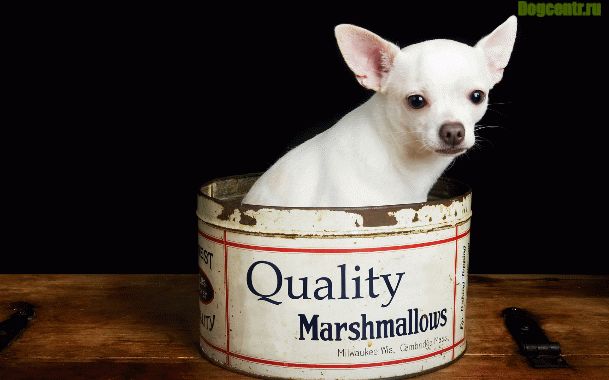 The manifestation of constipation is characterized by the attachment of a dog of considerable effort to release the intestines, unsuccessful attempts and pain syndrome as a result of these actions. In addition, a dog may try to go to the toilet several times during the day, but all these attempts will not be successful. This condition may take several days. No wonder that many people are very worried about the state of their beloved friend, but they have no idea how to cure constipation in a dog.
The manifestation of constipation is characterized by the attachment of a dog of considerable effort to release the intestines, unsuccessful attempts and pain syndrome as a result of these actions. In addition, a dog may try to go to the toilet several times during the day, but all these attempts will not be successful. This condition may take several days. No wonder that many people are very worried about the state of their beloved friend, but they have no idea how to cure constipation in a dog.
Illiterately organized feeding is the main factor causing constipation in a dog. So, the symptoms of the disease are characterized by:
- Multiple attempts of the animal to be emptied and the inability to do so, so that the process of defecation is delayed.
- The animal experiences pain in the process of bowel movements.
- The dog is tormented by vomiting (an extremely dangerous symptom that signals the presence of another disease).
Prevention
To avoid the annoying canine disease, first of all it is necessary to establish the feeding process:
- Dog food must be balanced. It is better if it is a special feed.
- The dog should not receive any handouts from the table.
- No boiled tubular bones should be present in the dog’s diet (there are cases when undigested fragments of such bones accumulate in the intestines of an animal, so the only thing that can help is surgery).
In the most severe cases, the dog simply removes part of the intestine, clogged with undigested hardened feces.
The following dog feeding errors often include:
- Feeding the dog with stewed broth,
- The presence in the diet of foods overloaded with fiber (such foods are difficult to digest) or products poor in fiber,
- Overfeeding or underfeeding of the animal.
- Lack of fluid in the dog's body.
Water enemas are just a way to help a dog with constipation. The purpose of the enema is to clean the crowded intestines from hardened feces. The procedure itself, while facilitating the condition of the sick animal, does not mean an end to the torment, since the diet will not be adjusted in the right direction. Fresh drinking water, a varied diet, meat with vegetables, raw and boiled (pumpkin, celery), uncooked bran, beets, and even fresh carrot juice will improve intestinal peristalsis.
How to treat constipation in dogs should be known, as well as being aware of your fourfold's digestive system to avoid annoying mistakes in feeding and caring for your pet. Preventive measures taken in advance by far-sighted owners prevent dogs from constipation:
- Balanced feed containing all the necessary vitamins and minerals.
- “Blend” portions of food with a small amount of vegetable oil once twice a week.
- The presence of water in sufficient quantity.
- Walking, playing in the fresh air, exercise, designed to keep the four-legged pet in shape.

 Particular attention should be paid to adequate physical exertion. The dog's body was not designed for reclining on a plane. The dog is designed for hunting, running, active games and fun with the ball and rubber ducks. Kohl so you got such a wonderful friend, do not be lazy, read through the literature on how to care for your pet, so that it remains cheerful and healthy. Tune in to an active life, full of not only cares, but also the joy that unselfish friendship of a four-legged creature gives.
Particular attention should be paid to adequate physical exertion. The dog's body was not designed for reclining on a plane. The dog is designed for hunting, running, active games and fun with the ball and rubber ducks. Kohl so you got such a wonderful friend, do not be lazy, read through the literature on how to care for your pet, so that it remains cheerful and healthy. Tune in to an active life, full of not only cares, but also the joy that unselfish friendship of a four-legged creature gives.
Koprostasis
Improper feeding of a pet can lead to the development of a disease such as coprostasis. It may occur as a result of feeding the dog with bones or eating large portions. It is worth noting that the dog constipation from the bones occurs very often. Among other things, such a disease pursues males suffering from an enlarged prostate gland. The last factor is directly related to the formation of constipation, because as a result of an increase there is a squeezing of the intestines, and, of course, feces can not go outside.
Another cause of difficulty excretion of feces is the presence of damage to the pelvic region, since this factor greatly affects the condition of the intestines. In such cases, pets simply need to take laxatives. Dogs suffering from coprostasis are fairly easy to identify, as they are always restless, periodically run around emptying, but this does not work for them. Among other things, the stomach of such dogs is always in a somewhat swollen state.
With suspicion of the disease, dogs must be given to a hospital for an x-ray examination of the intestinal area. Mild conditions can be cured by the simplest methods, for example, using antispasmodic agents.
Another effective remedy is a combination of vaseline (20) and castor oil (1). Of course, severe cases require surgery. Thus, an enema for a dog with constipation is carried out under general anesthesia, and the procedure is supplemented by the removal of feces through obstetric forceps. In order to avoid complications of the existing situation, in no case is it allowed to feed the dog when the intestines are overfilled.
Owners of dogs at least once in their lives faced with the lack of defecation of a pet or its difficulty. But not everyone knows how to deal with this problem and how you can help a four-legged friend. Is constipation always a reason to go to the vet and what to do if the dog has constipation?
If a person has started a dog, then he should be attentive to his health. What can suggest that the pet is not all right with the intestines?
First of all, a healthy dog walks in “by and large” at least twice a day. If it began to be emptied less often or stopped altogether, then this is a reason to get accustomed to its general state, and one should not immediately panic. The number of defecations of an animal depends largely on its size, physiology and age.
First of all, it is necessary to evaluate how a pet behaves. If he is cheerful, cheerful, with a good appetite, and the feces have a uniform taut consistency, then there is no particular cause for concern.
But you can see that the dog is trying to go to the toilet, straining, straining hard, but to no avail. At this point, you can hear her as well, since constipation causes pain and discomfort.
In addition, there are several symptoms that clearly indicate that the dog is constipated:
- bloating - gas accumulates in the intestines, and the dog often rumbles in the stomach;
- - in case of intestinal obstruction, in most cases, pets refuse to eat;
- the dog may have;
- she drinks a lot of water;
- general malaise - a dog without great enthusiasm perceives the message of a walk, moves a little and strives to go home.
In some cases, you can help your pet yourself, but not always. Seek medical attention if you have the following symptoms:
- if blood feces, foam, undigested feed particles are present in feces;
- feces have a distinct smell of rot and dampness.
What can cause such a condition?
Improper diet and other causes of constipation
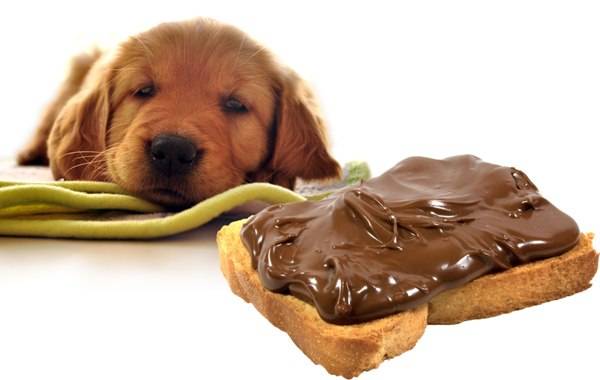
Much depends on it, including the quantity and quality of emptyings. The following can cause constipation:
- the dog ate a large number of bones, especially tubular boiled ones;
- pet feed steep broth;
- in the diet there is a large amount of fiber;
- overfeeding the dog.
Also, difficult bowel movement may cause dry food that is not suitable for a pet.
Often constipation is not an independent disease, but only one of the symptoms of a more serious condition:
- diseases of the gastrointestinal tract, liver and kidneys;
- neurological or orthopedic problems;
- and prostate in males.
The ingestion of a pet of foreign objects can also provoke an obstruction of fecal masses. If the veterinarian finds out the cause of the constipation, then an X-ray of the peritoneum, complete blood count, ultrasound examination is prescribed.
Treatment of constipation in dogs

Therapeutic treatment includes the use of lactulose preparations that soften the fecal masses - Duphalac, Lizolac, Lactusan, Livo-varnish, Portalak. In addition, for this purpose, you can use liquid paraffin.
The most effective method of relieving a pet of constipation, as well as to prevent them, is enema. They successfully cleanse the intestines of hardened fecal stones.
If a diagnostic study showed that the dog’s intestines are filled with bone fragments, then surgery is often necessary to remove them under general anesthesia.
If constipation is accompanied by abundant vomiting and a complete lack of appetite, then supportive therapy is prescribed in the form of droppers, protecting the body from dehydration.
In more complicated cases, veterinarians may resort to amputation of a fragment of the large intestine together with the masses that fill it.
Correction of nutrition for constipation
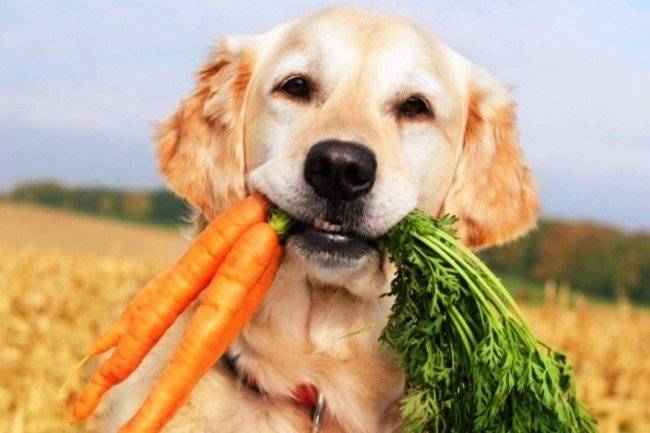
If the dog does not have special symptoms that require medical assistance, the owner can help the pet by changing its diet:
- The following products are excluded from the diet: rice, pulses, meat broths, corn, meat with muscle tissue (muscular), cheeses, yesterday’s fermented milk products, cheeses.
- Food is given fractionally, in small portions, it is desirable that it be liquid and warm.
- It is recommended to include in the dog menu:
- boiled buckwheat, boiled in water or milk;
- vegetable stew;
- a small amount of boiled sea fish, carefully cleaned of bones, preference should be given to fish with white meat;
- freshly prepared kefir, yogurt without additives;
- raw vegetables - carrots and beets;
- fresh plums (in case the pet has no more than two pieces).
While the dog is sick, you can feed it ready canned food intended for puppies or dogs with chronic diseases. Usually these foods have increased digestibility.
Home remedies for constipation

Pet owners can cope with a dog’s constipation if it is caused only by an unhealthy diet.
The following products help in its removal:
- yogurt (given instead of breakfast);
- fresh cabbage juice (you should be careful with it, as it often causes increased gas formation);
- buckthorn decoction;
- infusion of pumpkin seeds (2 tablespoons of seeds per one cup of boiling water, infused for about half an hour in the heat);
- a mixture of crushed flax seeds with vegetable oil or prepared flax oil.
At home, you can do cleansing enemas with vaseline. Heated to a warm state, the oil gently and slowly introduced into the rectum of the dog. For a very large pet, one glass of oil is taken, for a dog weighing about 20 kg - 75-100 ml, for small breeds 1-2 tablespoons will suffice.
If it does not pass, then the pet most likely has intestinal obstruction and the procedure should be stopped.
Enemas are best done by placing the dog in the bathroom or basin, purely for hygienic reasons.
Before enema, you can try oral administration of vaseline oil. It is heated to room temperature and injected into the cheeks of a dog with a syringe that does not have a needle. For dogs of dwarf breeds for a single reception is enough one teaspoon, medium - one tablespoon, large - 2-3 tablespoons. You need to give twice a day, until a positive result is achieved.
You should not worry about overdose, as its surplus leaves the body naturally. When constipation is recommended to increase the number of walking up to 5 times a day and try as much as possible to walk. Movement fruitfully affects the activity of the intestines, makes it work. This mode should be observed for two or three days.
If the actions have not had the desired effect, the dog still has symptoms of the disease, then it is imperative to seek medical help.
Preventive measures against constipation
Like any other disease, constipation is better to prevent than to treat them later. What should be done to prevent such a state? The following rules must be followed:
- observance of the feeding regime is obligatory - the pet should receive food at the same time in the prescribed amount;
- consumption of heavy products in large quantities should be avoided, everything should be in moderation;
- you should not treat the dog with bones every day, they should be in the diet a rare delicacy (bones often become the cause of intestinal blockage);
- exclude from the diet foods that cause increased gas formation - legumes, apples, cabbage, including Brussels sprouts and broccoli, oats, starches - potato and corn;
- provide your pet around the clock access to water, and it should always be fresh;
- periodically enrich pet food;
- try to walk your pet more often, and not less than 20 minutes;
- refuse to walk a newly-eaten dog, a minimum of 30 minutes should pass from the moment of feeding;
- do not forget about the regular intake of anthelmintic drugs and prophylactic inoculation.
In most cases, if we are not talking about hereditary and congenital ailments, the pet's health depends on the care and care of the owner. The more attention is paid to the development and well-being of the dog, the healthier the dog, the more long his life will be. And if constipation happened, the caring owner knows how to save a four-legged friend from this trouble.
Like humans, animals are also susceptible to various diseases. Moreover, it is sometimes difficult to identify the disease, since our smaller brothers will not tell where their pain is, how they feel and will not share their problems.
The only way out is to carefully monitor the behavior of your pet and respond to changes in it in a timely manner. Also, the owners are supposed to properly care for the dog, to comply with its diet, to monitor the walk and that the animal during the day moved a lot.
Many owners often face such a problem as constipation in a dog. Few people know what needs to be done, but before answering this question, we will try to find the causes of intestinal obstruction in domestic animals.
Causes of illness
The dog has a great many causes of constipation, from the wrong diet to the sedentary lifestyle of a pet.
The most common causes of illness include the following:
- It occurs if the animal receives less than the required amount of fiber, which happens when a dog is fed exclusively with dry food or monotonous food;
- Many dogs suffer from constipation from bones;
- Causes obstruction in the intestine of foreign bodies. It can be all the same small fragments of bones, stones or chips. Well, how do they get there? - the answer to this question is well known to any owner who has ever walked his pet on the street;
- Cause constipation in a dog and various diseases of internal organs - liver, stomach, pancreas;
- Dehydration or obesity can also cause problems with your pet's digestive system.
- Sedentary lifestyle. A young animal is less prone to constipation than older dogs, so watch how much your pet moves. Arrange for him long walks in the evenings and on weekends.
Symptoms of illness
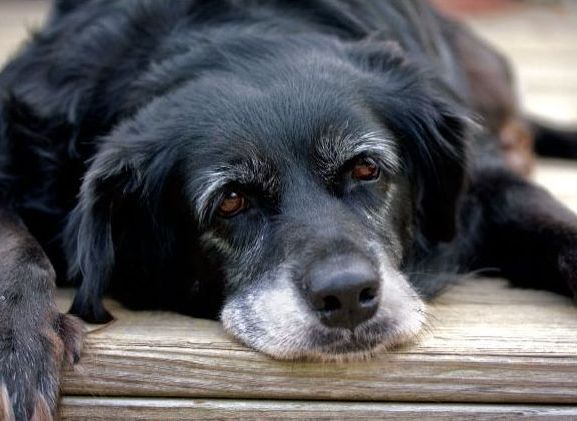
Dog schedule is well known to all dog breeders. The animal must go out at least twice a day, then it also has a bowel movement. If you notice that your dog could not go to the toilet during the day, although he honestly tried, it means that you are faced with a dog constipation problem.
Symptoms of this immediately appear in the behavior of your pet. He will make significant efforts to empty the intestines, "push", but to no avail. Sometimes the dog can not be emptied due to pain. Undoubtedly, when you see a picture of constipation in a dog for several days, you need to do something.
Dog constipation treatment
There are several ways to help your animal stop its torment. First of all, you need to cause a loosening of its intestines. An enema from constipation, which can be done to a dog, is of great help in this, of course, if there are no contraindications to its use.
If the enema did not help or its use is prohibited, you can resort to the drug method - give the animal a laxative, designed exclusively for dogs. Such drugs are often sold in veterinary stores or pharmacies, and sold without a doctor's prescription.
You can avoid the use of drugs and give the dog from constipation vegetable or castor oil, known for its laxative properties. The oil is added to food, the volume is taken from one to several spoons, depending on the size of your pet.
Prunes can also be used as a laxative. Since not all dogs love him, the berries are crushed and mixed into the food of the sick animal.

If none of the above has helped you, most likely, a problem of defecation is caused by a foreign body in the intestines or some kind of illness of the internal organs. Then you can not avoid a visit to a specialist. Although this is extremely rare and mainly the tips provided in this article help the owners to solve the problem with the chair of their four-legged friends.
But if, after all, nothing helped the dog, then the veterinarian should carefully examine the dog and try to establish the reason why it cannot go to the toilet, and also suggest an effective treatment.
Well, all owners should take note - basically just the wrong diet and exercise causes constipation in the dog, and therefore, everything is in your hands!


